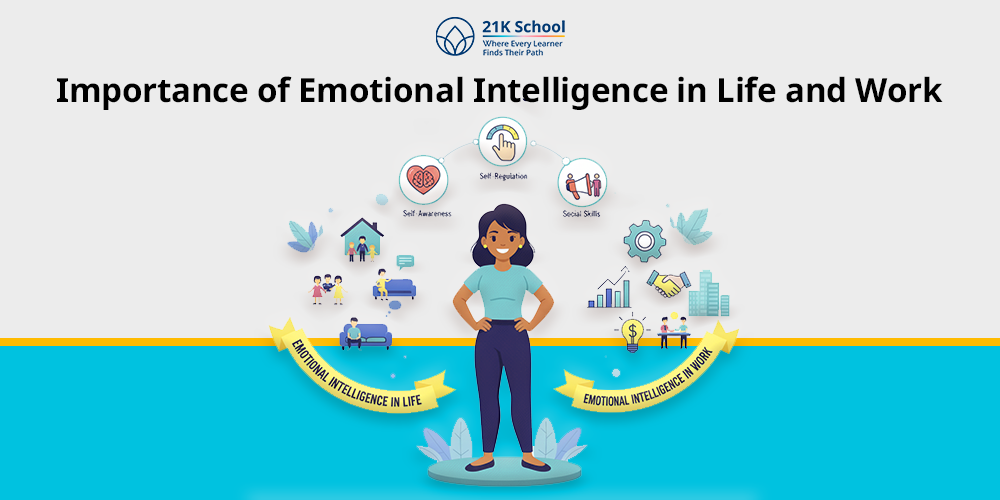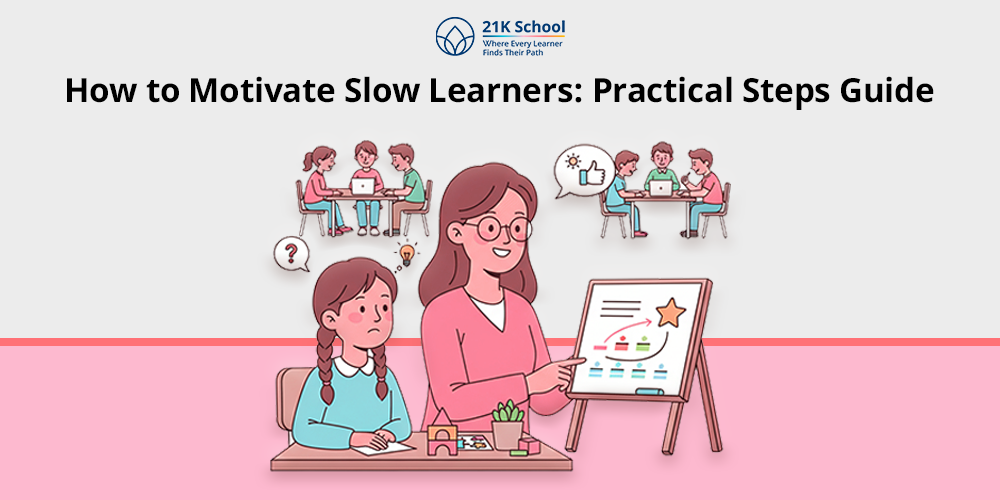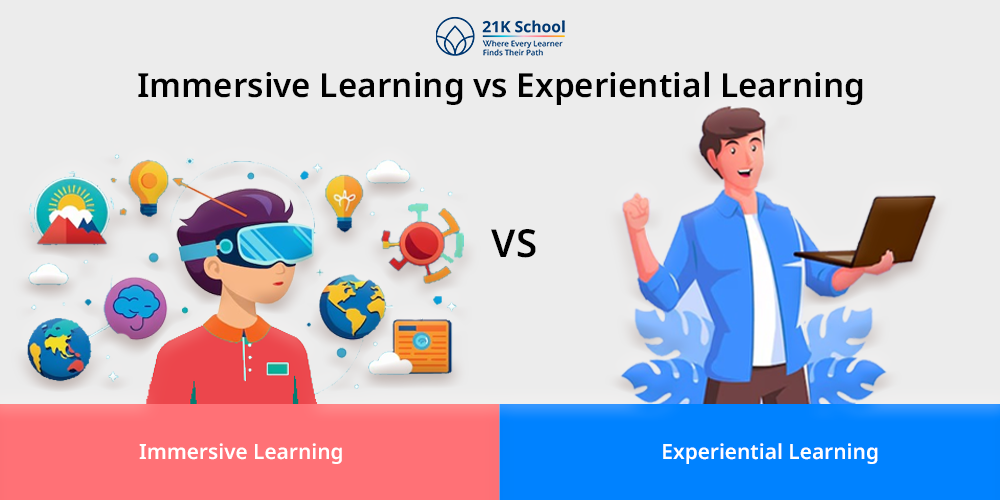
In today’s era, education is taking a shift from passive learning to learner- centric. Learning is becoming more technology- based and student centered.
Here, two approaches or methods of learning have emerged, i.e. immersive learning and experiential learning. Though they share some similarities in engagement and participation, they differ in methods of learning.
Immersive learning uses technology in education and virtual environments in learning. On the other hand, experiential learning involves real- life experiences in its approach.
Understanding both the techniques of learning can help in the intention of teaching. This can leverage the students’ learning experiences, engagement and participation.
Knowing the key differences between immersive learning and experiential learning can lead to implanting learning experiences.
Explore immersive and experiential learning with its meaning, examples, methods, techniques, mechanisms and limitations.
Table of Contents
- What is Immersive Learning?
- Examples of Immersive Learning
- What is Experiential Learning?
- Examples of Experiential Learning
- Immersive Learning vs Experiential Learning- 12 Top Differences
- Explanation for Difference Between Immersive Learning and Experiential Learning
- Final thoughts- Building the student- centric approach to learning
What is Immersive Learning?
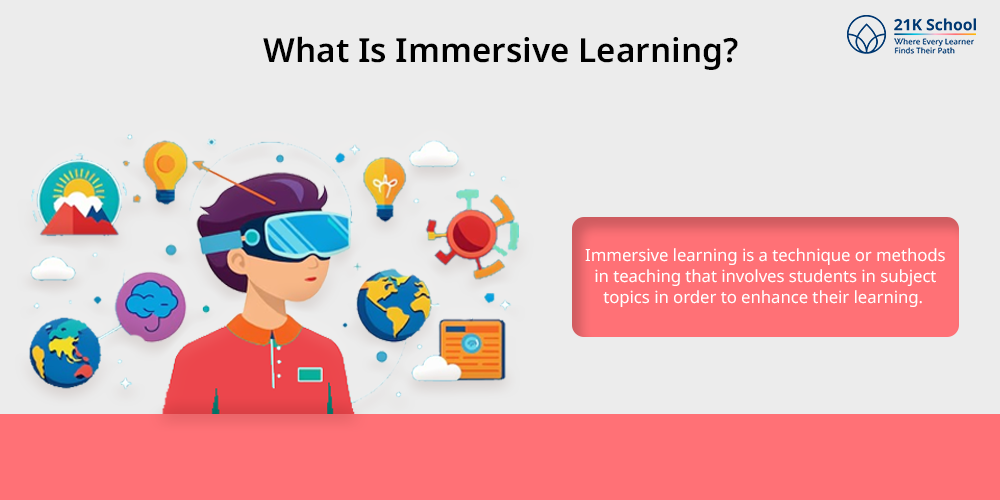
Immersive learning is a technique or methods in teaching that involves students in subject topics in order to enhance their learning. In immersive learning, the teaching approach is more interactive and dynamic.
Learners get to be involved in hands- on experience and interactive activities. It is more practical and experiential in the teaching and learning process. In immersive learning, different visuals, animations, sounds, motions are used for making them understand.
The approach of immersive learning is to make students acquainted with problem-solving techniques , think critically and explore the subject matters.
Examples of Immersive Learning
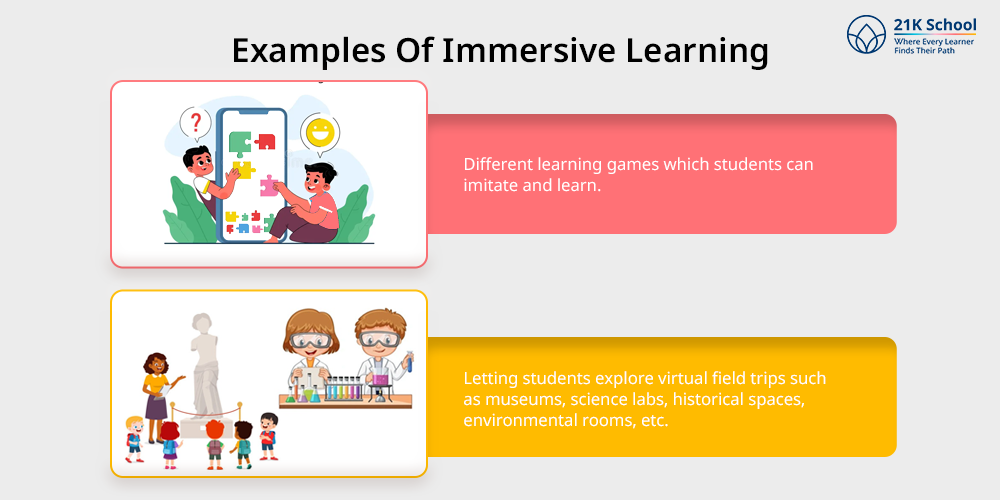
- Usage of different learning games which students can imitate and learn. Such as, language learning, interactive conversations, etc.
- Letting students explore virtual field trips such as museums, science labs, historical spaces, environmental rooms, etc.
Explore more on virtual school .
What is Experiential Learning?
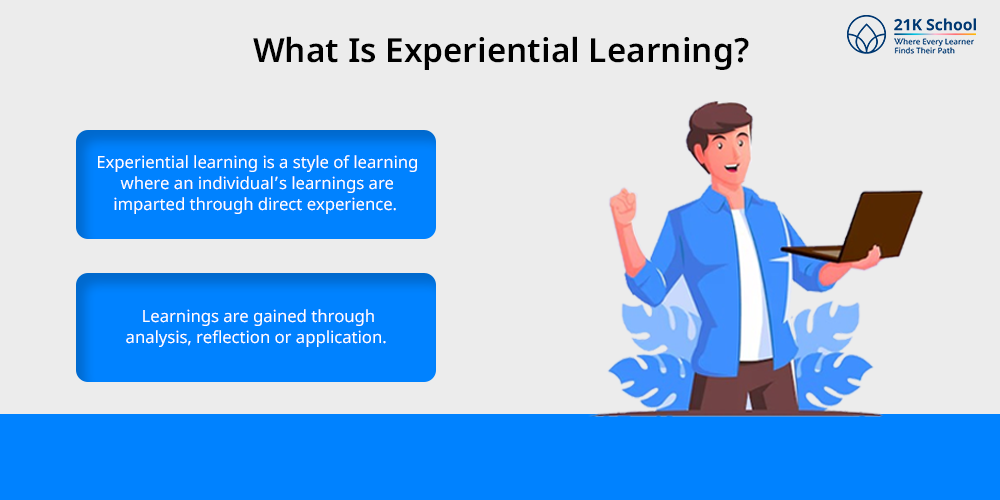
Experiential learning is a style of learning where an individual’s learnings are imparted through direct experience. Learnings are gained through analysis, reflection or application.
It encompasses learning by doing approach rather than just listening to teachers lectures or passive learning. Know more about student centered learning .
Experiential learning imparts decision making skills, critical thinking skills , retention and engagement. It promotes social interaction and collaboration skills .
It bridges the gap between theoretical and practical learning. Learners participate in real- world circumstances and get experiences.
Read on to uncover the detailed role of teachers in experiential learning.
Examples of Experiential Learning
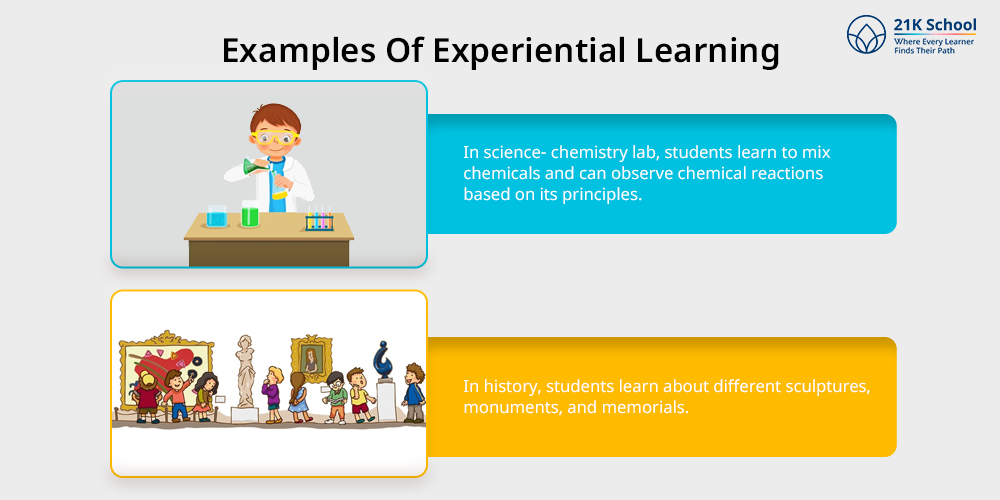
- In science- chemistry lab, students learn to mix chemicals and can observe chemical reactions based on its principles. These are through practice or hands- on experience in chemistry labs.
- In history, students learn about different sculptures, monuments, and memorials. They visit the following places for better understanding and experience. It helps students to relate it and lasts long in their memory.
Also Read, Benefits of Experiential Learning
Immersive Learning vs Experiential Learning- 12 Top Differences
| S.No. | Basis of distinction | Immersive learning | Experiential learning |
| 1. | Meaning | Learnings based on interactive tools or technological environments. | Learnings based on real- life experiences through direct reflection or analysis. |
| 2. | Method | VR, simulations | Real- life, field work activities |
| 3. | Environment | Artificial or Virtual | Physical or real- world situations |
| 4. | Examples | VR, stimulating environment or virtual labs | Scientific labs or historical museums |
| 5. | Engagements | Simulates real- world circumstances through engagement and participation. | Gain knowledge and experience through real- life exposure and analysis or reflection. |
| 6. | Reflection | Merely | Always |
| 7. | Cost- effective | Expensive | Cost- effective |
| 8. | Autonomy | Self- directed | Takes ownership |
| 9. | Learning pace | Personalised | Collaborative |
| 10. | Time taking | Less | more |
| 11. | Mechanism of feedback | Immediate | Depending on peers, mentors or self- reflection |
| 12. | Limitations | Lack of realism | Depend on real- world situations |
Explanation for Difference Between Immersive Learning and Experiential Learning
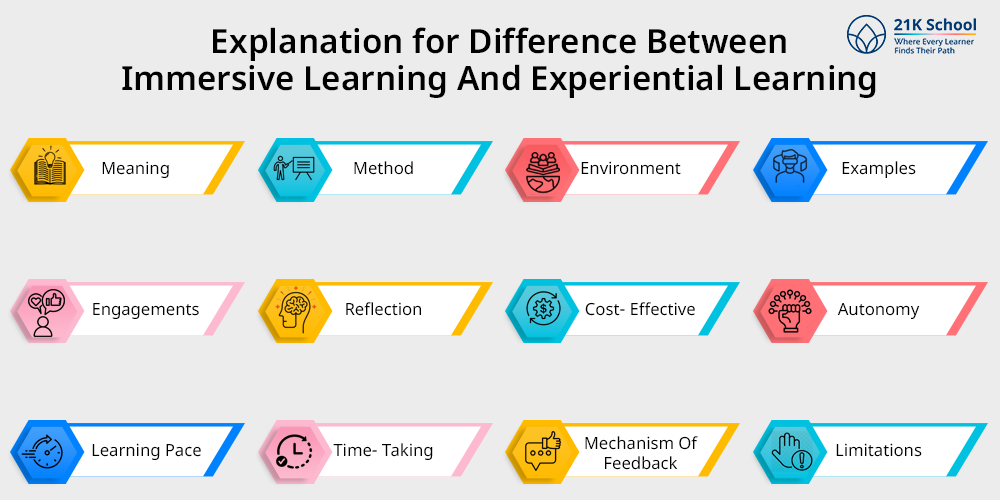
1. Meaning
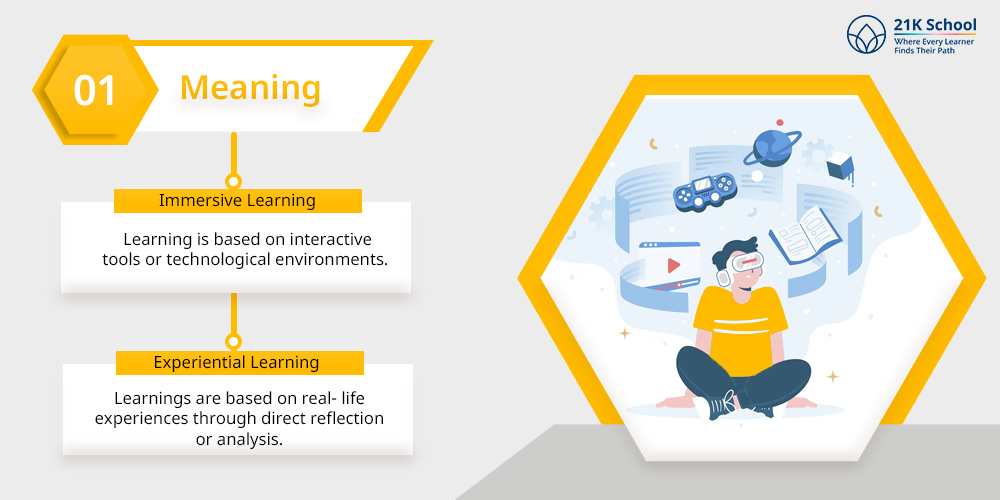
In immersive learning, learning is based on interactive tools or technological environments.
In experiential learning, learnings are based on real- life experiences through direct reflection or analysis.
2. Method
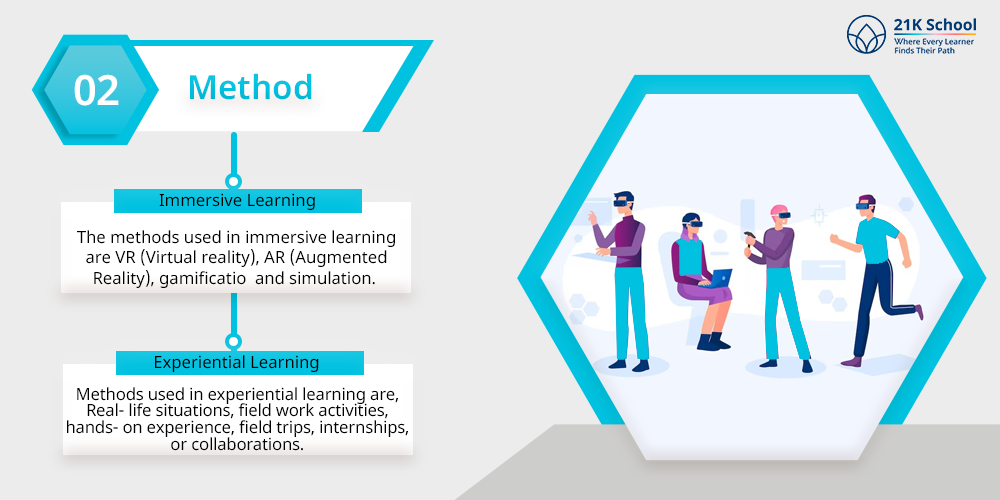
The methods used in immersive learning are VR (Virtual reality), AR (Augmented Reality), gamification and simulation.
The methods used in experiential learning are, Real- life situations, field work activities, hands- on experience, field trips, internships, or collaborations.
3. Environment
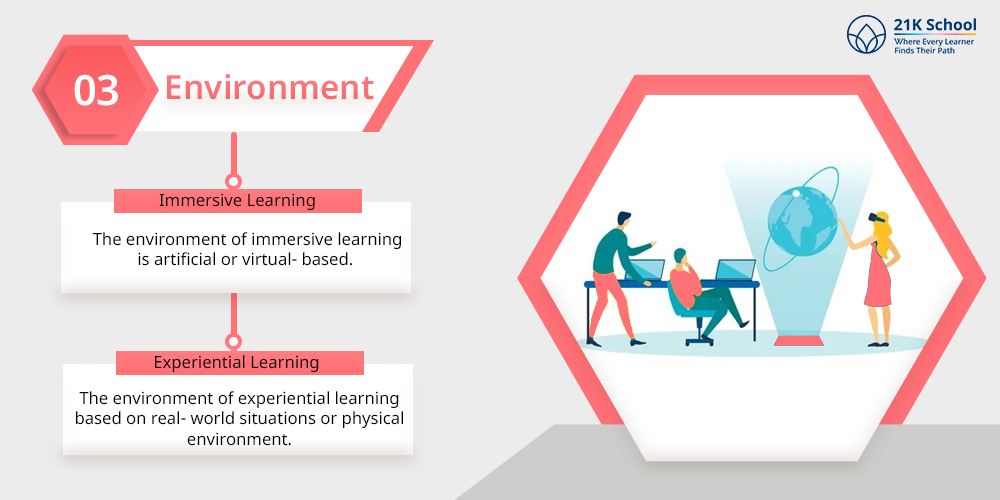
The environment of immersive learning is artificial or virtual- based.
The environment of experiential learning based on real- world situations or physical environment.
4. Examples
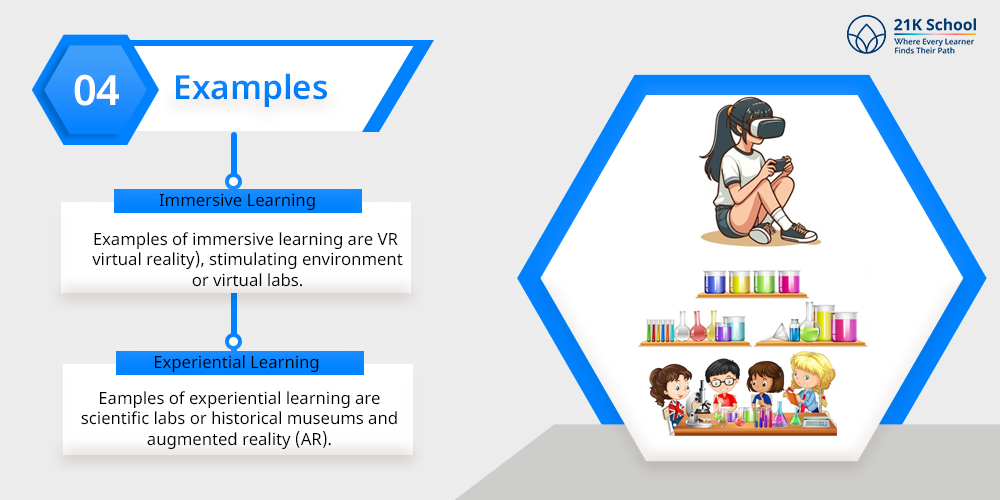
The examples of immersive learning are VR (virtual reality), stimulating environment or virtual labs.
The examples of experiential learning are scientific labs or historical museums and augmented reality (AR).
5. Engagements
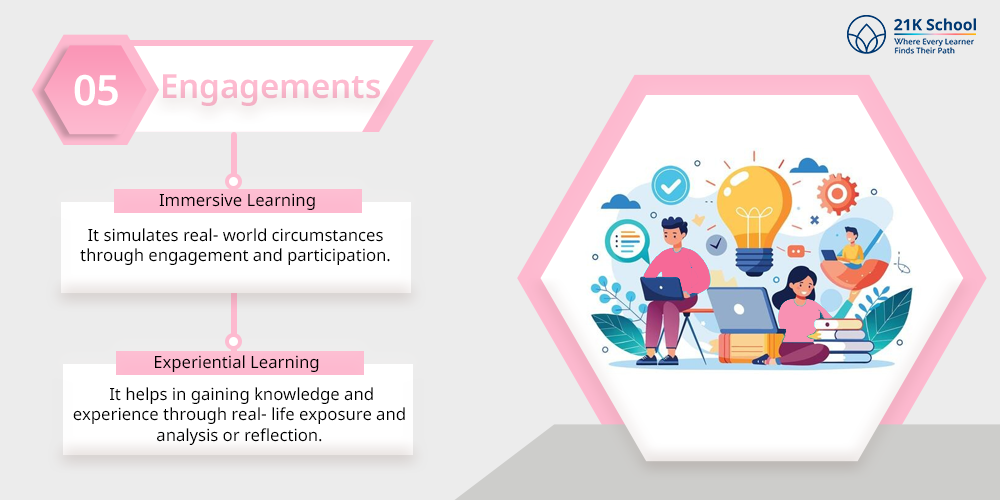
Immersive learning simulates real- world circumstances through engagement and participation.
Experiential learning helps in gaining knowledge and experience through real- life exposure and analysis or reflection.
6. Reflection
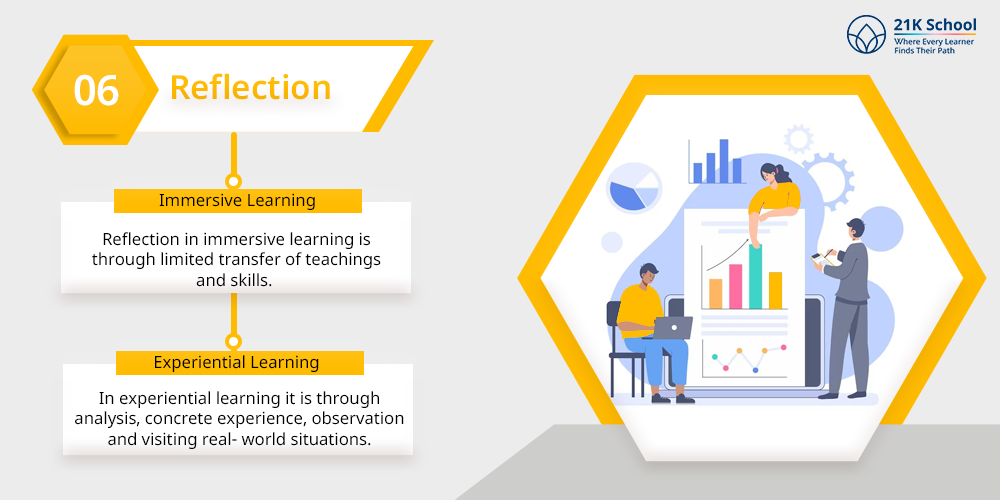
Reflection in immersive learning is through limited transfer of teachings and skills. Learner’s share and discuss through analysis, teachers learning or virtual environments.
Reflection in experiential learning is through analysis, concrete experience, observation and visiting real- world situations.
7. Cost- effective
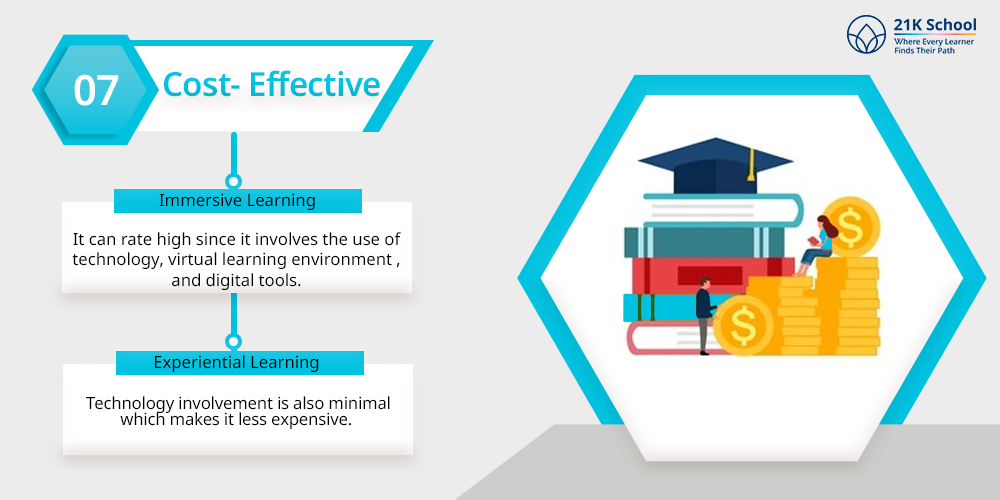
Immersive learning can rate high since it involves the use of technology, virtual learning environment , and digital tools. The cost for infrastructure and its amenities are incurred.
Experiential learning has involvement in real- world situations like field visits, trips, community engagement and local interactions. Hands- on learning and practical experience is very cost- effective. Technology involvement is also minimal which makes it less expensive.
8. Autonomy
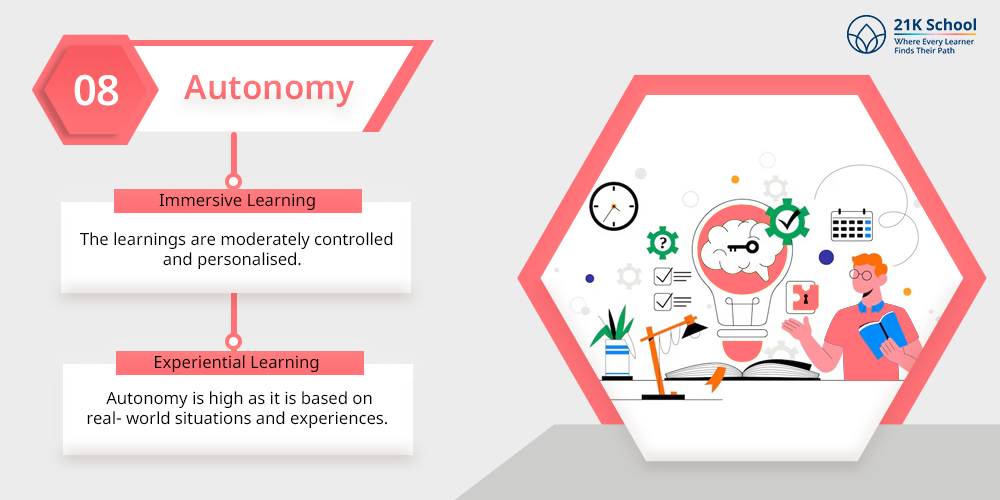
In immersive learning, the learnings are moderately controlled and personalised. It is too structured with digital bars.
In experiential learning, autonomy is high as it is based on real- world situations and experiences. The challenges faced are spontaneous and the learner has to be adaptable to each of their settings.
9. Learning pace
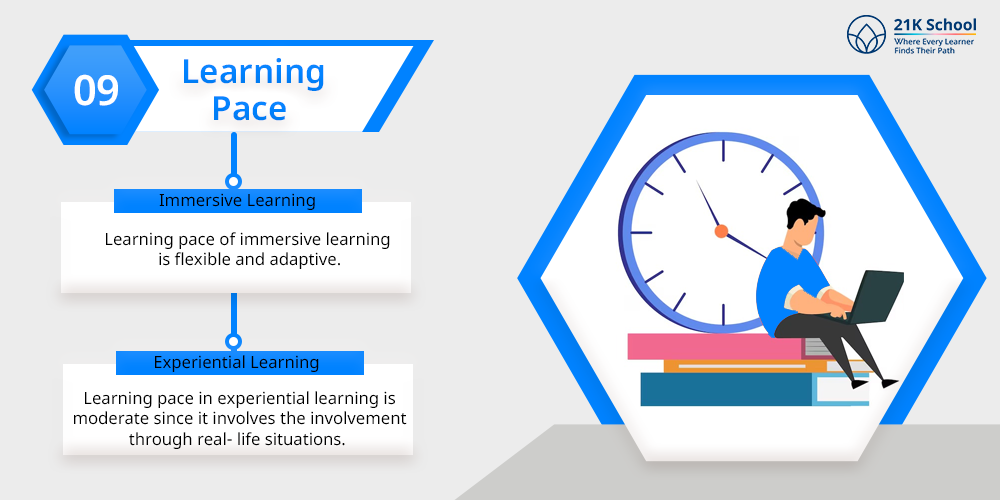
Learning pace of immersive learning is flexible and adaptive. However, there is less direct control since teachers guide through data.
Learning pace in experiential learning is moderate since it involves the involvement through real- life situations. The learning pace depends on mentors or team, as per their decisions.
10. Time- taking
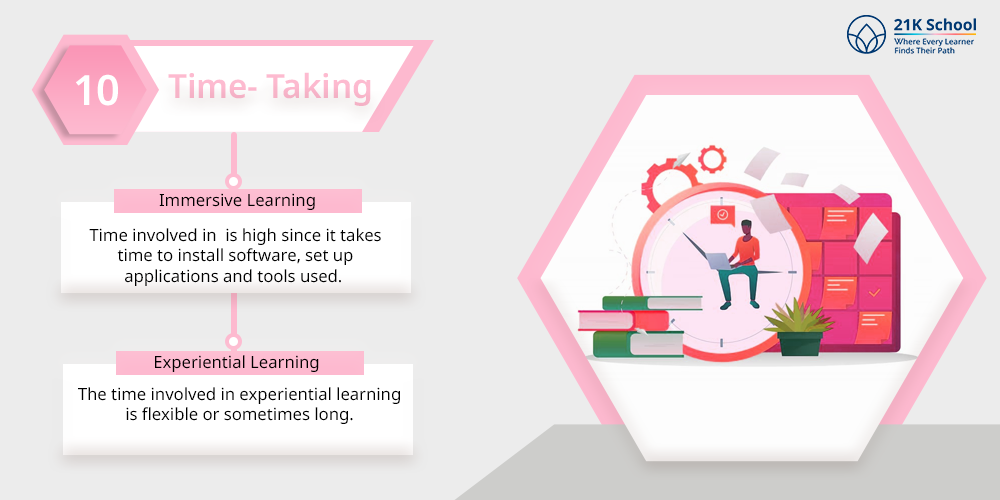
The time involved in immersive learning is high since it takes time to install software, set up applications and tools used.
The time involved in experiential learning is flexible or sometimes long. This is because the real- life situations or real- world experience may extend in duration depending upon the tasks.
11. Mechanism of feedback
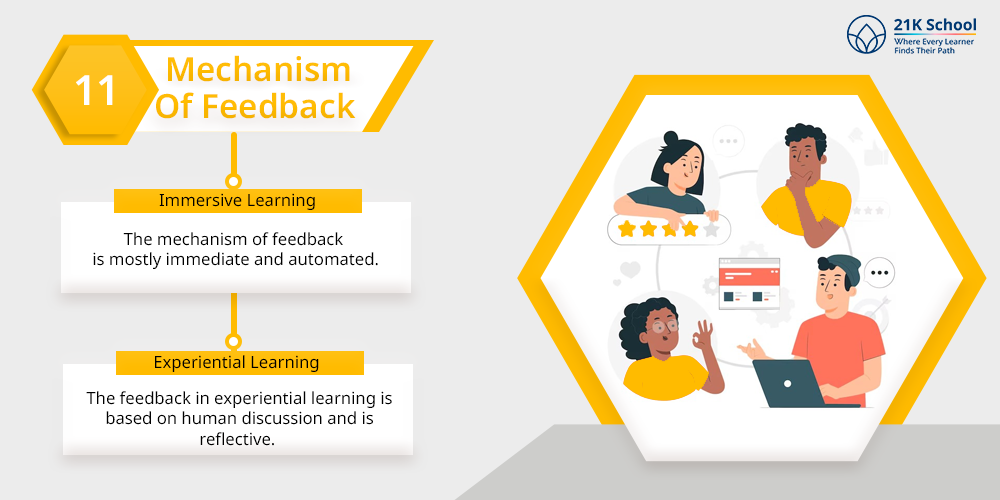
The mechanism of feedback in immersive learning is mostly immediate and automated. It also has options for personalised feedback depending on the individual’s performance.
The feedback in experiential learning is based on human discussion and is reflective. It is as per the interactions and participation in activities, approved by instructor, mentor, teacher or peer groups.
12. Limitations
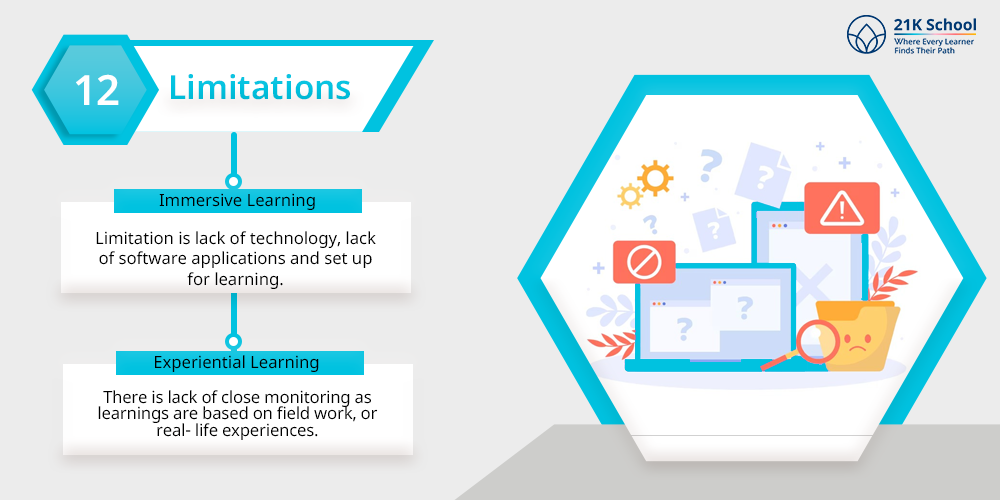
Limitation in immersive learning is lack of technology, lack of software applications and set up for learning. Sometimes learner’s do not have virtual world experiences and find it hard to work accordingly.
In experiential learning, there is lack of close monitoring as learnings are based on field work, or real- life experiences. Here, teamwork and collaborative work is high. This also requires social emotional learning
Final thoughts- Building the student- centric approach to learning
Both of the two methods of learning are powerful, reflective and engaging. Blending of the learning techniques and process can make learning more impactful.
They help teachers and students in choosing a more holistic, developmental and balanced approach. Know why social emotional learning is important
Educators or teachers can complement them together and use them in their teachings.
Immersive and experiential leanings offer students for learning experience, both in theory and practical terms. They serve a powerful tool in student’s engagement, participation and learning.

